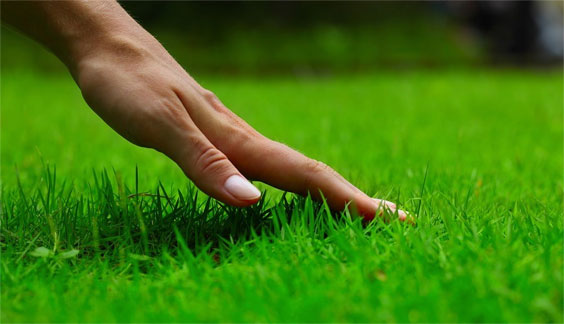Preparing your lawn for winter is essential to ensure it bounces back vibrant and healthy in the spring. With a few proactive steps, you can protect your grass from harsh winter conditions and set it up for lush growth when the weather warms up.
Understand When to Winterize Your Lawn
The timing for winterizing your lawn depends on your region’s climate and the type of grass you have. In the Austin, TX, area, winterizing should generally begin in mid-to-late fall, around late October or early November, once temperatures start to drop but before the first frost. Cool-season grasses (like fescue and bluegrass) and warm-season grasses (like Bermuda and zoysia) will have slightly different needs, so tailor your approach accordingly.
Conduct a Soil Test for Nutrient Balance
A healthy lawn starts from the ground up, so begin by testing your soil to check its pH level and nutrient balance. Soil testing kits are available at most garden centers or can be performed by lawn care professionals. Knowing your soil’s composition will help you identify any nutrient deficiencies, allowing you to apply the correct type and amount of fertilizer. Soil testing is particularly helpful in regions like Austin, where the soil can be more alkaline, affecting grass health. Aim for a pH level of 6.0 to 7.0 for most grass types.
Apply Fall Fertilizer for Winter Hardiness
Fertilizing is an essential step in preparing your lawn for winter. Fall fertilizer, also known as winterizer, gives your lawn the nutrients it needs to survive colder months and stay green longer. Choose a slow-release fertilizer high in potassium, which helps strengthen your lawn’s root system, making it more resilient to frost and drought.
For cool-season grasses, a late fall application is typically best. For warm-season grasses, apply fertilizer around six weeks before the first expected frost date, usually in early October in Austin. Be sure not to over-fertilize, as excess nitrogen can cause grass to grow too quickly, making it more vulnerable to winter stress.
Clear Away Leaves and Debris
While leaves are beautiful in the fall, leaving them on your lawn can be harmful. If left to pile up, they block sunlight, retain moisture, and can lead to mold or mildew. Regularly rake or blow leaves and remove any fallen branches, dead plants, or other debris to allow sunlight and airflow to reach the grass. If possible, mulch the leaves instead of removing them; mulched leaves provide a natural layer of compost that helps enrich the soil.
Aerate Your Lawn for Optimal Health
Aeration is a crucial step that should not be overlooked, especially if your lawn experiences high foot traffic. Over time, the soil becomes compacted, preventing water, nutrients, and oxygen from reaching the grass roots. Aerating your lawn loosens the soil, allowing essential resources to penetrate deeper into the ground.
The best time to aerate in Austin is early to mid-fall. This allows your lawn plenty of time to recover and take in nutrients before winter arrives. Aerators can be rented, or you can rely on professional lawn care services to handle this important task.
Overseed for a Lush Spring Lawn
Overseeding is the process of spreading grass seed over an existing lawn to fill in thin spots and improve density. For cool-season grasses, overseeding in early fall is best, as it gives seeds enough time to establish roots before winter. This is particularly helpful if your lawn has experienced wear and tear from summer activities.
In warmer regions like Austin, where Bermuda or Zoysia grass is common, overseeding with a cool-season variety (such as ryegrass) can help keep your lawn green during winter. The cool-season grass will remain green while the warm-season grass goes dormant, ensuring year-round appeal.
Adjust Mowing Height and Frequency
As winter approaches, gradually lower your mowing height. This helps protect the grass from disease by preventing long blades from becoming matted under snow or heavy rain. However, avoid cutting the grass too short, as this can stress the plant and make it more susceptible to cold damage. Aim to mow cool-season grass to around 2.5 to 3 inches and warm-season grass to 1.5 to 2 inches.
Once the lawn enters dormancy, reduce the mowing frequency to avoid unnecessary stress on the grass.
Water Strategically Before Winter
While watering typically decreases in the winter months, it’s essential to ensure your lawn is well-hydrated before the first frost. A well-watered lawn is more resilient against cold, as hydrated soil retains heat better. In Austin, fall can still be dry, so keep an eye on rainfall levels and water as needed. However, be careful not to overwater, as this can lead to fungal growth.
Once the temperatures dip consistently below 40°F, you can reduce watering significantly or stop altogether until the spring.
Control Weeds to Reduce Spring Growth
Weeds compete with grass for nutrients, light, and water, making them especially problematic during the colder months when grass growth slows. Applying a pre-emergent herbicide in the fall will prevent weed seeds from germinating and taking over your lawn.
This step is particularly beneficial for warm-season lawns, as many common weeds start growing during the cooler months. Avoid applying post-emergent herbicides, as they can damage your lawn if used too late in the season.
Protect Against Pests
Cold weather can drive pests to seek warmth, sometimes resulting in winter infestations. Common lawn pests in the Austin area, such as grubs, chinch bugs, and mole crickets, can cause significant damage if not managed. Inspect your lawn for signs of pests, like patches of dead grass or soil mounds, and take steps to address infestations before winter. Applying a targeted insecticide or organic pest control solution will help keep pests at bay.
Maintain Your Lawn Equipment
Winter is a perfect time to maintain your lawn maintenance equipment. Drain fuel from lawn mowers, clean mower decks, and sharpen blades to prevent rust and maintain efficiency. Store your equipment in a dry area to protect it from moisture and corrosion, ensuring it’s in top shape when spring arrives.
Plan for a Strong Spring Start
Winter preparation isn’t only about protecting your lawn through the colder months; it’s also about setting up for a healthy start in spring. Consider the treatments and processes above as an investment in your lawn’s future health. For best results, keep track of your lawn care schedule and make a note of what worked well to repeat successful techniques.
Call in the Professionals
Preparing your lawn for winter can be time-intensive and labor-intensive, requiring careful attention to detail. For homeowners in Austin who want to ensure their lawns are in the best shape possible, calling in professional landscapers can make a world of difference. Elements Lawn & Landscape offers a variety of services to help your lawn thrive all year long. From soil testing and aeration to lawn fertilization and weed control, our team has the expertise to handle every aspect of lawn winterization.
Protect and Beautify Your Lawn with Elements Lawn & Landscape
At Elements Lawn & Landscape, we work hard so you don’t have to. For over 20 years, our landscaping experts have provided quality services that “Keep Austin Green” and help residents achieve beautiful, healthy lawns. From planning to building to maintenance, we are here to make your lawn care journey seamless and stress-free. Our comprehensive lawn care services include everything from fertilization, weed control, and landscaping installation to ongoing maintenance and flowerbed design.
Let our team help you prepare your lawn for the winter months with professional care and attention to detail. Transform your lawn today with Elements Lawn & Landscape, and enjoy a yard that flourishes, even through winter. Contact us now to schedule your consultation and start planning your winter lawn care strategy.


